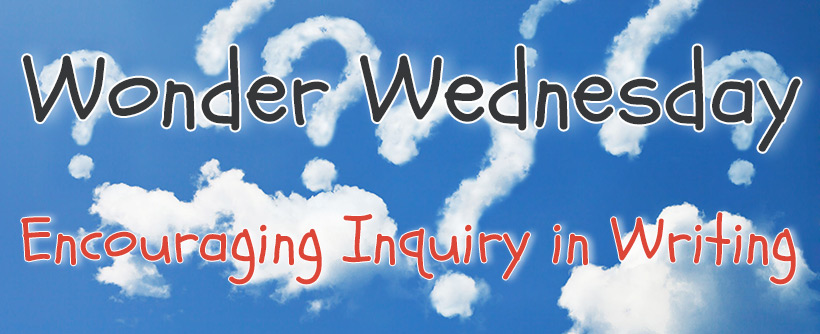
Hopefully winter weather has finally left your neck of the woods, but oftentimes rain showers and indoor recess continue to dampen our days. Don’t let that get you down! This season brings the chance to watch storms from a window, play in a nice drizzle, see a beautiful rainbow, or watch water drops drip from objects after a hard shower. In this Wonder Wednesday, students will explore all things related to rain.

Students can find the above visual prompt in the Write About This “Nature” category . Have students select the picture and choose an appropriate prompt as an anticipatory set.
1-True or False: You enjoy thunderstorms. Why or why not?
2-Describe the worst storm you have ever seen.
3-Write a short fictional story or fable about where lightning comes from.
Have students share their responses and discuss any similarities they hear from each other’s responses. Inform students that they will be investigating a topic of their choice about rain. To help define that topic, they will start by completing a KWL chart. This will help them see what topics about rain they may wish to explore further.
Students can now work to generate their own investigative question for further research. This can include investigating how rain is formed, what causes a rain storm, how rainbows are formed and even what parts of the world receive the most rain and how this influences the environment. If you have a current science unit of study related to weather– the water cycle, for example– this will be a great opportunity for students to explore their current curriculum! If students are having difficulty narrowing down a topic or finding research, there are great resources on rain at Wonderopolis: “Why Does It Rain?“, “How Much Rain Can a Cloud Hold?“, and “Why Do Rainbows Appear?“.

For younger students, you can get their inquiry started by doing a quick lab activity on making it rain (indoors!) from Planet Science. They can then generate their research questions/topics from the KWL chart they continue to work on. To organize their research for formulation of an essay or multimedia presentation, students can complete the Inquiry Project Essay Graphic Organizer. This is a great way for students to organize the evidence they gather during their research! Research can be acquired through science curriculum materials, internet and library research as well as interviews with community members and local centers.
They can take notes in the Write About This app as they research and add their own audio interpretations to their notes as well.
Finally, have students create a final project presenting their discoveries. Write About This is great for short “essays,” video scripts or presentation notes. Students can easily provide an image or drawing to help illustrate their investigative research to share with the class. While students share their research with peers, they can review their KWL charts to see if their initial questions about rain have been answered!
CCSS.ELA-LITERACY.CCRA.R.1
Read closely to determine what the text says explicitly and to make logical inferences from it; cite specific textual evidence when writing or speaking to support conclusions drawn from the text.
CCSS.ELA-LITERACY.CCRA.R.7
Integrate and evaluate content presented in diverse media and formats, including visually and quantitatively, as well as in words.
CCSS.ELA-LITERACY.CCRA.R.10
Read and comprehend complex literary and informational texts independently and proficiently.
—
Lani deGuia is a teacher, instructional technologist, and social media manager. She has over 13 years of educational experience in traditional and online classroom settings for both K-12 and adult learners. She currently works in digital content and strategy for businesses and personally blogs at Rose Tinted Traveler.










No Comments